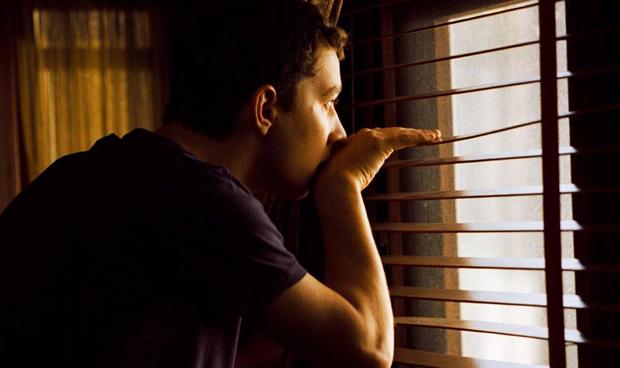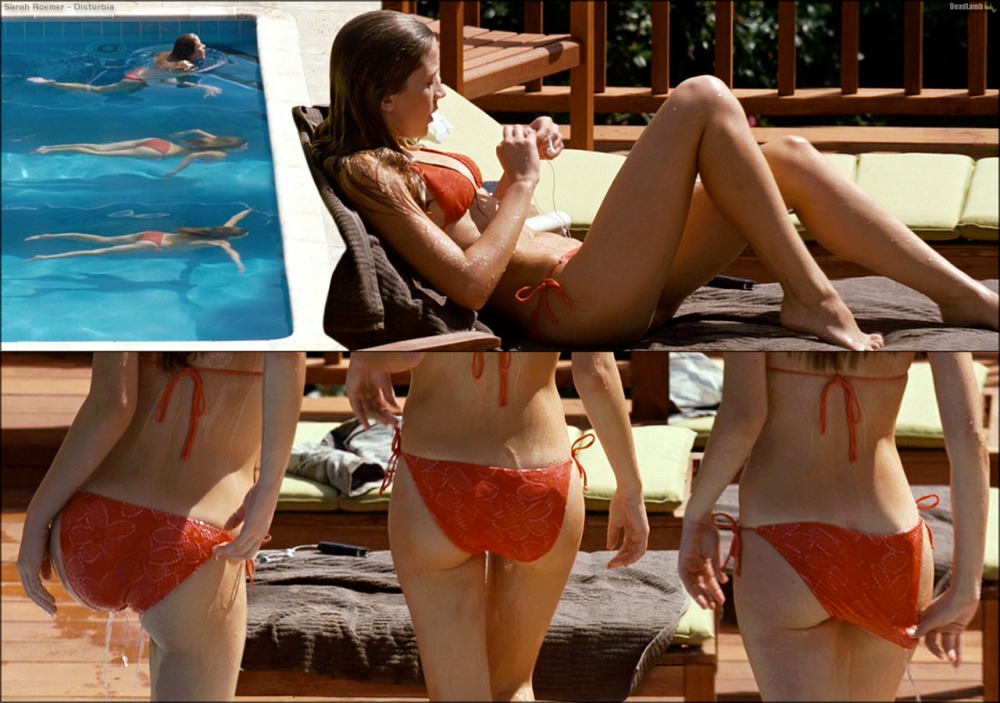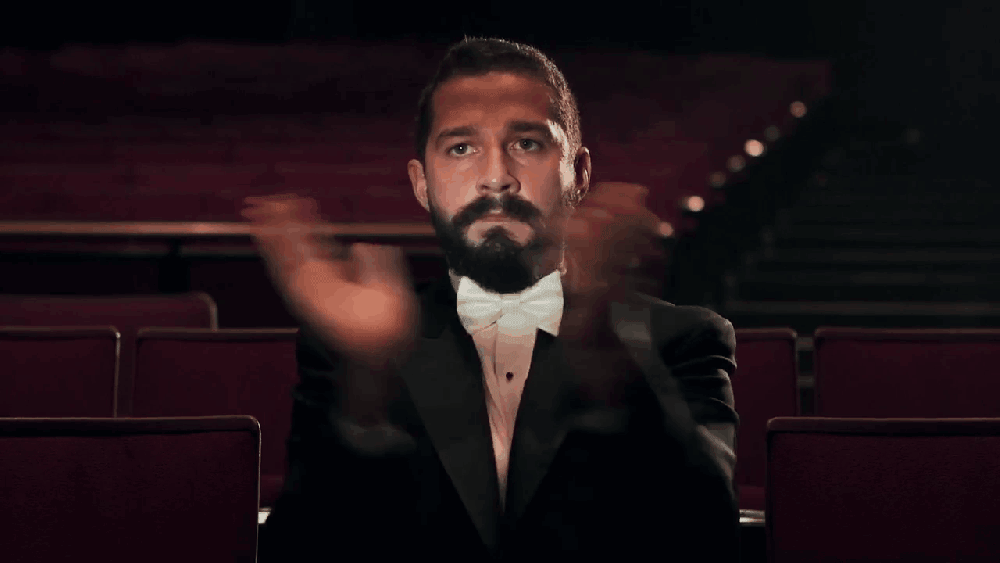After a recent re-screening of a particular scene of Disturbia in class, I decided to take up some good ole’ diligent student initiative and re-watch the entire movie again. I hadn’t seen this film since its release in theaters (2007), and I remember it not blowing me away, but still being a very solid picture. Upon my recent second viewing, I don’t think I gave it enough credit.
Quickly putting aside the somewhat absurd transformation of the neighbor girl (Sarah Roemer) from spectacle / object of voyeur to a romantic partner with seemingly no motivation or narrative causality, the remainder of the film is glorious. Specifically, its use of technology, the enclosed/claustrophobic space of LaBeouf’s home, and the interplay between different “windows into the world,” all help contribute to a very well crafted movie.

A couple of select quotes from the early scenes of the movie set up (somewhat obviously) a great and somewhat stereotypical storyline. The very first scene, before LaBeouf’s father’s violent death, they are seen fly-fishing. When LaBeouf misses out on his catch, his father remarks “You did everything you could, sometimes they just get away.” When the main cop figure and Viola Davis first attach LaBeouf’s ankle tracker, Davis advises him to “find constructive things to do to keep busy.” While I’m sure neither his father or Viola Davis meant to spy on a mass murderer and eventually murder him with hedge-trimmers whilst turning a new neighbor fetish into a blossoming romance, well, that’s sort of what happened.
Quickly babbling off some obvious compliments such as the movie’s pacing, set design, editing, soundtrack, and ability to create suspense and have the viewer at the edge of their seat, let’s dive into some of the more theoretical questions!
First, the entire concept of house arrest. The idea of being “disabled” without being physically / mentally disabled, but instead, spatially disabled. The first few weeks of LaBeouf’s house arrest are marked by his ever-growing lonesomeness, with his one friend in Hawaii and his mother at work, we see shots of him alone establishing his isolation from the outside world. The only access he has to the outside world, aside from the string he strategically places around his yard that marks the boundaries he cannot cross, is through the windows within his home. These glimpses of the outside world, selections from an infinite space, are the only things he is allowed to be privy of. Us, as spectators, experience the film, and his experiences, in a similar fashion. However, we also experience film in general comparably. The final product that we view in theaters is only one last version of an infinite amount of drafts, possible edits, included/not included scenes, and a compilation of triumphs and mistakes by the entire crew who worked on producing it.

The film is also self-referential, knowingly winking at the audience. When LaBeouf’s friend (Aaron Yoo) returns, in a scene reminiscent of Vicente Minnelli’s (or maybe Claude Chabrol’s?) Madame Bovary when Emma chronicles the actions of the townsfolk, LaBeouf narrates his various neighbors’ actions as they occur throughout the day, clearly having memorized their daily habits. As he sarcastically remarks, this is just a “natural side effect of chronic boredom,” defining his actions as watching “reality without the TV, a whole world outside my window.” The reflexive nature of this dialogue displays the film’s understanding of its own voyeuristic elements, and the film concludes with a scene where Yoo is filming him and Roemer making out, marking it “soon to be the most popular video on YouTube.”
However, this does bring up an interesting case of what Laura Mulvey would define as “the gaze,” or women as spectacle. While this is no doubt the case during the first third of the film with LaBeouf staring through windows (multiple windows, at that) to gaze upon his new attractive neighbor, it only occurs because of his extenuating circumstances. Sure, he is still voyeuristically watching Roemer because he finds her attractive (and being locked at home doesn’t make it more socially acceptable for you to become more of a pervert), but his sense of excitement is heightened significantly because of his captivity within his own home. This “gaze” is LaBeouf’s only access to the outside world – through windows, binocular lenses, or video cameras. Should we view this particular gaze within the same breadth as Mulvey’s patriarchal hierarchy, or does this warrant another explanation? This question is only further muddied by the fact that this object of spectacle (Roemer) becomes a voyeur herself when she crosses the plain of object into subject and joins LaBeouf for his stake-out of their murderous neighbor. When the spectacle becomes part of the main cast of characters, what happens then?

TURNS INTO

^ [ Transformation from Object of Spectacle into Voyeur Herself ] ^
Lastly, Disturbia is able to expertly integrate multiple forms of “filmmaking” (technologically) into one cohesive film. Whether it be professional cameras, grainy handycam footage, through binoculars, or a live feed of cell phone snapshots, the film is able to grace the spectator with a myriad of various “eyes.” This evokes ideas from Vertov’s concept of the “kino-eye,” or the camera eye, as being superior to the human eye. Within this film, we have a plethora of “windows” in which we view the action, some better, and some worse, than the human eye. Moments when we switch to a handycam and the graininess of the footage is slightly jarring are juxtaposed with times when characters view the action through binoculars. I even caught myself, whilst thinking about these different “eyes” within the film, saying that “the characters themselves can see better than the cameras they are using.”
While Vertov himself praised the camera’s evolutionary possibilities, unlike the human eye, Disturbia would seem to heartily disagree with that sentiment. However, once realizing that, in fact, the POV shots from the characters’ perspectives are actually professional cameras in use, this distinction between what “the characters see” and what “technology sees” begins to blur. A hierarchy of visions is created, valuing one”eye” over another. However, technology is able to allow the characters to extend and enhance their vision (no matter the quality) – they can record footage for playback (how LaBeouf finally finds hard evidence that the neighbor is a murderer), still view the neighbor’s house while hiding themselves (using the screen on the handycam to direct the camera), or live-stream footage from a distant place (receiving screenshots of the murderer from the store from Roemer). These different “eyes” allow the characters to take advantage of multiple perspectives for their spying. If Vertov were able to see Disturbia, would his thoughts on the kino-eye as the superior eye remain? Or does this hierarchy within the film that combines human and technological vision obscure his original theory?
While debates ensue regarding Shia LaBeouf’s skills as an actor/rapper/artist/entertainer, it can certainly be said that Disturbia is an under-appreciated film from the late 2000s that deserves revisiting. Its ability to transport the viewer into the space of LaBeouf’s home, this claustrophobic space of voyeurism, is uncanny, and the interchanging between filmic formats and technique are astonishingly fluid. In today’s world, where technology is able to not only improve human vision, but enhance it beyond our wildest dreams with the help of the latest technological developments, Disturbia presents now prehistoric technologies of the flip phone and grainy handycam. Blurring the lines of voyeurism, “the gaze,” human vision, and the stalker/boyfriend duality, this is absolutely a quality film.
